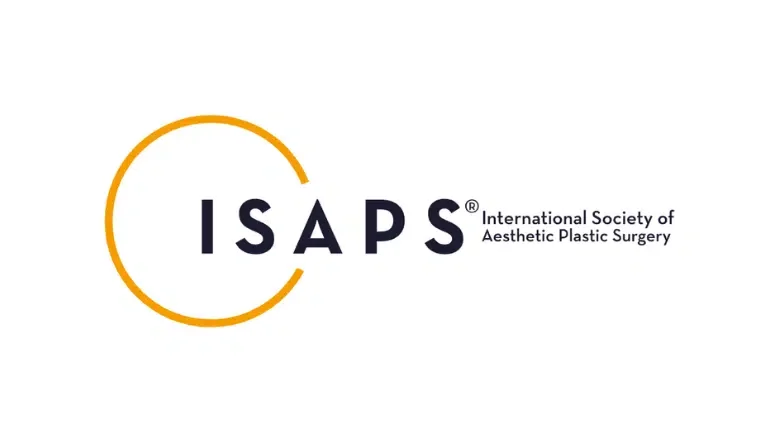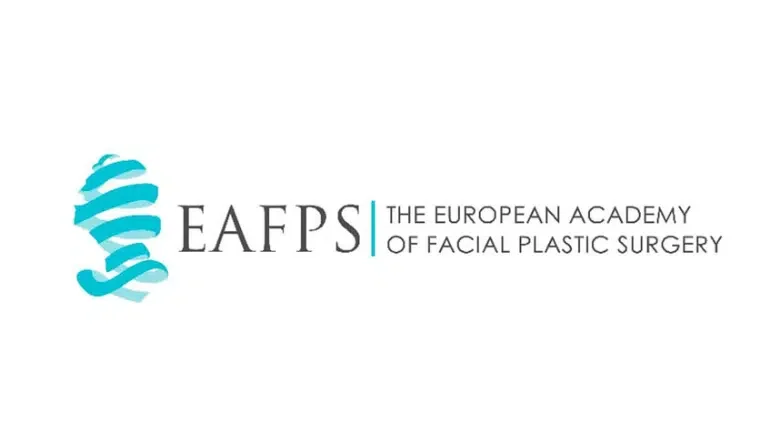How To Minimise Scarring After Breast Surgery
Breast surgery can be done for a whole bunch of reasons. Some people have it to change the way their breasts look, like making them bigger or lifting them up. Others might need it for serious health reasons like treating breast cancer. No matter why you’re having the surgery, you’re likely to have scars afterwards. These scars can be uncomfortable or even upsetting for some people and can make getting better a bit tougher. But don’t worry, there are ways to make these scars less noticeable and bothersome, which can make you feel better about the whole experience.
Here at Centre for Surgery in London, our skilled surgeons are really passionate about helping you get the look you want. They know that scars can be both physically and emotionally tough to deal with. That’s why we’re here to give you all the advice and support you need to feel good about your journey to recovery.
Types of Breast Surgery Procedures and Their Potential for Scarring
Breast surgery comes in many different forms, and each type of procedure has its own likelihood of leaving behind scars. Understanding the types of surgery and the kind of scarring they can cause is important for setting realistic expectations for the results and recovery process.
Breast Augmentation Mammoplasty, commonly known simply as breast enlargement or breast implants, involves inserting silicone or saline implants to make the breasts larger. Scars from this type of procedure can appear in various locations depending on the surgical approach taken. They may be located around the areola (the coloured area surrounding the nipple), under the crease of the breast where it meets the chest, or in the armpit. Each of these locations has its own pros and cons in terms of scar visibility and healing.
Breast Lift Mastopexy is another type of breast surgery aimed at lifting sagging or drooping breasts to a more youthful position. Scarring from this procedure is generally more noticeable, as it usually involves an incision around the areola, another one running vertically from the bottom of the areola to the crease under the breast, and sometimes an additional incision along the breast crease itself.
Breast Reduction Mammoplasty is performed to reduce the size of breasts that are overly large and causing discomfort. Scarring from this type of surgery is similar to that of a breast lift, with incisions commonly made around the areola and extending downwards toward the lower part of the breast. These scars can be more extensive given the complexity and extent of tissue removal involved.
Finally, for women who have had to undergo a mastectomy as part of breast cancer treatment, Breast Reconstruction Surgery can be an option to rebuild the breast mound. The types of scars resulting from this procedure can vary significantly depending on the specific surgical techniques and approaches used, such as whether tissue from other parts of the body is used or if implants are involved.
Surgical Approaches and Types of Incisions for Breast Surgery: How They Affect Scarring
When it comes to breast surgery, the kind of incision your surgeon makes plays a big role in how your scars will look afterwards. The choice of incision is influenced by many factors, such as the type of surgery you’re getting, the shape and size of your breasts, and your personal preferences. Here are some common types of surgical incisions and where they’re often used:
- Inframammary Incision: This is a cut made in the natural fold underneath your breast. It’s a popular choice for surgeries like breast augmentation (breast enlargement) and breast reconstruction. Because the incision is hidden in the crease, the resulting scar is generally less visible when you’re standing up.
- Periareolar Incision: This incision goes around the edge of the areola, the darker skin surrounding your nipple. This approach is common for various types of breast surgeries, including breast augmentation, breast reduction, and breast lifts. The scar usually blends well with the edge of the areola, making it less noticeable.
- Transaxillary Incision: In this approach, the surgeon makes an incision in your armpit. It’s mostly used for breast augmentation surgeries. The benefit of this incision is that there are no scars on the breast itself, but there may be a small scar in the armpit area, which is generally less visible.
Breast Lift / Reduction Incisions
- Vertical or “Lollipop” Incision: This is often used in breast reduction or breast lift surgeries. The incision starts at the edge of the areola and goes down vertically to the crease under the breast, resembling a lollipop. This approach allows for significant reshaping and lifting but does result in a more visible scar.
- Wise Pattern or “Anchor” Incision: This approach is generally reserved for very large breast reductions or for lifting extremely sagging (ptotic) breasts. The incision goes around the areola, then down the front of the breast vertically, and also extends horizontally along the breast crease, forming an anchor-like shape. Given the extent of the incisions, scarring is more extensive, but this approach allows for the most significant reshaping.
RELATED: Different Types Of Breast Augmentation Incisions
The appearance of scars can vary depending on your skin type, your body’s healing process, and the skill of your surgeon. It’s always a good idea to discuss the different incision options with your surgeon to understand what will work best for you and how to manage scarring post-surgery.
Factors Influencing Scar Formation After Breast Surgery
The formation of scars following any type of breast surgery isn’t just a simple matter of having the operation and seeing what happens. There are several factors that can influence how noticeable your scars will be, how long they’ll take to fade, and even how they might feel. Here’s a deeper look into some of the key factors that play a role:
- Genetic Predisposition: Some people are naturally more likely to develop certain types of scars due to their genetic makeup. Hypertrophic scars, which are thick and raised, or keloid scars, which expand beyond the original wound site, are more common in individuals who are genetically predisposed to them.
- Lifestyle Factors: Things like smoking and too much exposure to the sun can make your scars worse. Smoking restricts blood flow, making it harder for your body to heal, while sun exposure can darken the scar tissue, making it more noticeable.
- Surgical Technique: The skill of your plastic surgeon and the specific method they use for making incisions and closing wounds can also influence scarring. Surgeons who are highly skilled in making precise incisions and using techniques that minimize tissue trauma can often produce scars that are less noticeable.
- Postoperative Care: How you look after your surgical wounds in the weeks and months following your operation has a huge impact on how your scars will turn out. Following your surgeon’s advice on wound care, using prescribed ointments, and avoiding unnecessary stress on the healing tissues can help make scars less visible over time.
- Nutrition: Eating well isn’t just good for your overall health; it’s crucial for wound healing too. A balanced diet that’s rich in vitamins and minerals, especially vitamin C and zinc, can aid in the body’s natural healing processes and may help to minimize scar tissue formation.
How to Prepare for Breast Surgery to Minimise Visible Scars Post-Surgery
Getting ready for breast surgery isn’t just about the day of the operation itself; it also includes steps you can take before the procedure to improve your chances of having minimal and less noticeable scars. Here’s how to prepare:
- Select a Skilled Surgeon: The first and most crucial step in minimising visible scars is to choose an experienced and qualified plastic surgeon. An expert will not only perform the surgery effectively but will also employ the best techniques to ensure minimal scarring. They will also be well-versed in aftercare to facilitate better wound healing.
- Discuss Surgical Techniques: Before your surgery, sit down with your surgeon to discuss the types of incisions that will be used during the procedure. Understanding where and how the incisions will be made can give you an idea of what to expect in terms of potential scarring.
- Quit Smoking: Smoking is detrimental to wound healing. It restricts blood flow and can contribute to complications that may worsen scarring. If you are a smoker, it’s highly advised to quit at least a few weeks before your surgery and to continue abstaining during the recovery period.
- Preoperative Consultation: Use this time to speak openly with your surgeon about any concerns you have regarding scarring. They can provide you with information on what will be done during the surgery to minimize scars, as well as what you can do post-surgery. This is the time to ask about any treatments or topical applications that could be beneficial for scar minimization.
- Sun Exposure: Limit sun exposure on the area that will be operated on for several weeks before your surgery. Sunburn or tanned skin can affect how well you heal and could make scars more noticeable.
- Nutrition: As with any surgery, being in good health will aid in your recovery. A balanced diet rich in vitamins and minerals, particularly Vitamin C and zinc, can contribute to better wound healing.
- Mental Preparation: Stress and anxiety can have physical repercussions, including on your skin’s ability to heal. Consider stress-management techniques like meditation or deep-breathing exercises to put yourself in the best mental state for surgery and recovery.
- Follow Pre-Surgery Instructions: Your surgeon will likely provide you with a list of pre-surgery instructions, including medications to avoid before the procedure. Following these guidelines will help to minimise risks during surgery and in the healing process afterwards, including the risk of problematic scarring.
What to Avoid After Breast Surgery to Reduce Scarring
Taking proper care after your breast surgery is crucial for minimising scars and promoting optimal healing. Here are some key points to keep in mind regarding what to steer clear of during your postoperative period:
- No Smoking or Vaping: These habits restrict blood flow, impede healing, and can lead to greater scarring. Quit smoking and vaping for at least several weeks after the operation to facilitate better wound healing.
- Limit Alcohol Consumption: Alcohol not only hampers the healing process but may also interact with any medications you’re taking post-surgery. It’s best to limit alcohol or avoid it altogether in the weeks following your procedure.
- Limit Alcohol Consumption: Alcohol not only hampers the healing process but may also interact with any medications you’re taking post-surgery. It’s best to limit alcohol or avoid it altogether in the weeks following your procedure.
- Maintain Good Nutrition: Continue to eat a well-balanced diet rich in vitamins and minerals that support the body’s healing process. Foods high in protein, vitamin C, and zinc can particularly aid in skin regeneration and minimizing scar tissue.
- Avoid Stressing the Incision Site: Especially in the early stages of healing, refrain from activities that could pull or strain the area where incisions were made. Heavy lifting, intense workouts, and stretching movements can stress the sutures and worsen scarring.
- Steer Clear of Sun Exposure: UV rays can darken your scars, making them more noticeable. If you have to be outdoors, wear protective clothing and, once the scar is fully healed, apply a high SPF sunscreen specifically to the scarred area.
- Don’t Pick at Scabs or Stitches: It can be tempting to fiddle with healing areas, but this disrupts the natural healing process and can result in worse scarring. If your stitches become uncomfortable, contact your surgeon for guidance rather than trying to solve the problem yourself.
- No Swimming or Soaking Baths: Water can be a breeding ground for bacteria, and soaking fresh incisions is a recipe for infection. Stick to showers until your surgeon gives you clearance to bathe or swim.
Overview of Surgical and Non-Surgical Scar Reduction Methods
Reducing scars after breast surgery can significantly improve both your emotional well-being and aesthetic outcomes. Both surgical and non-surgical options are available for scar reduction, and each method comes with its own set of advantages, considerations, and efficacy.
Surgical Methods for Scar Reduction
1. Scar Revision Surgery
In scar revision surgery, the existing scar tissue is surgically removed, and the wound is closed again with meticulous suturing techniques designed to minimise the new scar’s visibility. Different surgical techniques may be employed depending on the scar’s age, location, and type. These can range from simple excisions to more complex procedures involving skin flaps or grafts. The aim is to make the scar less noticeable and more aligned with the natural lines and creases of your skin.
2. Fat Grafting
Also known as lipofilling or fat transfer, this procedure enhances the appearance of depressed or atrophic scars. The surgeon harvests a small amount of fat from another part of your body, like your abdomen or thighs. After processing and purifying the fat, it is then injected into and around the scar. This helps to elevate the indented scar to the level of the surrounding skin. Additionally, the injected fat can bring about an improvement in the scar’s colour and texture, making it blend in more naturally with the surrounding skin.
Non-Surgical Methods for Scar Reduction
1. Topical Treatments
Various creams, gels, and silicone sheets can be effective in reducing the visibility of scars. Silicone-based treatments are particularly beneficial as they keep the scar area hydrated and protect it from the sun, thus aiding in the healing process and preventing hyperpigmentation.
2. Scar Massage
A gentle massage technique can help to soften and flatten the scar. It works by breaking down fibrous scar tissue and improving the flexibility and texture of the skin. This method is particularly beneficial for raised or thickened scars.
3. Steroid Injections
For hypertrophic or keloid scars, steroid injections can be highly effective. They reduce the size of the scar and can also alleviate any associated discomfort or itching. Multiple sessions may be needed for optimal results.
4. Laser Therapy
Laser treatments can target different layers of scar tissue, breaking them down while stimulating the body’s natural healing process to form healthier, less visible scars. This method can be effective in reducing redness and improving the overall texture of the scar.
5. Morpheus8
This is a cutting-edge microneedling and radiofrequency treatment that stimulates collagen production and tightens the skin. It can be particularly helpful for improving the texture and appearance of scars over a series of treatments.
Personalised Consultation
It’s crucial to consult with experts for personalised advice. Factors such as the type, age, and location of the scar, along with your overall health, will influence the best course of action. At Centre for Surgery, we offer a comprehensive consultation process to understand your specific needs and guide you through the available options for scar reduction. Our goal is to ensure you are fully informed and confident in your choices to achieve the best possible outcome.
FAQs about Scarring after Breast Surgery
When should I think about having scar correction surgery?
You might want to consider scar correction surgery if a scar is bothering you a lot. This could be because it’s painful, stops you from moving freely, or you just don’t like how it looks. Surgery can also be a good idea if you’ve tried other ways to make the scar look better, but they haven’t worked. People with scars that are bumpy and stick out can often see good results from this kind of surgery.
Can I get rid of breast surgery scars completely?
It’s tough to get rid of scars completely because they are the body’s natural way of fixing itself. However, there are surgical and non-surgical treatments that can make them much less noticeable. The success of these treatments can depend on a number of things, such as how your body heals and where the scar is.
How long will it take for the scars from my breast surgery to get better?
The time it takes for scars to get better can change from person to person. Usually, the skin starts to heal around two weeks after the surgery. During this period, it’s really important to take special care of the area where the incision was made. After that, you’ll notice the scar might go darker and feel harder, but don’t worry, that’s all part of the process. Over the next year or two, the scar will likely soften and become less noticeable, although it might not go away entirely.
What can I do to make the scars from my breast surgery look better?
You’ve got a few choices when it comes to making your scars less noticeable. You can use things like special sheets or creams on the scar or even get injections to improve its appearance. If the scar is really noticeable, there are also treatments like laser therapy or Morpheus8 that can help. If these methods aren’t enough, surgical options like scar correction surgery or adding fat to the scar area might be the next step.
Can natural stuff like plants or oils help my scars look better?
Natural treatments can sometimes help, but they usually aren’t as effective as medical ones. Aloe Vera is known for making skin feel better and can help with swelling. Vitamin E oil is another option; if you rub it into the scar, it can make the skin more stretchy and improve how the scar looks.
Why Choose Centre for Surgery for Your Breast Surgery?
Industry-Leading Expertise
At Centre for Surgery, we pride ourselves on offering world-class services in plastic and reconstructive surgery, including an array of breast surgery options. With years of experience and a dedicated team of highly skilled surgeons, we’re committed to providing the highest level of care and the most optimal results. Our surgeons have devoted their careers to the field, staying abreast of the latest techniques and technologies to help you achieve the aesthetic outcomes you desire.
Compassionate Care
Our approach goes beyond surgical intervention. We understand that any surgery, cosmetic or medical, can have emotional and physical implications. Our compassionate care extends to every patient, offering emotional support, comprehensive information, and guidance throughout your surgical journey.
Personalised Treatment Plans
No two patients are alike, and neither are our treatment plans. After a thorough consultation, we tailor our surgical approaches to meet your individual needs and concerns. We also offer strategies for scar reduction and management, aiming to make your recovery journey as smooth as possible.
State-of-the-Art Facilities
Our clinic in Baker Street, London, is equipped with the latest state-of-the-art surgical technology, ensuring that your surgery is performed in a safe and highly controlled environment.
Patient Testimonials
Don’t just take our word for it. Listen to what our satisfied patients have to say:
- Sarah: “My breast augmentation at Centre for Surgery changed my life. The surgeons and staff are caring, and I couldn’t be happier with the results.”
- Michael: “As a man undergoing breast reduction, I felt completely understood and supported. The outcome exceeded my expectations.”
- Emily: “I had my breast reconstruction done here after mastectomy. The skill and care of the surgeons helped me regain my confidence. They also have a great post-op scar management program.”
Easy Consultation Booking
Ready to make a life-changing decision? Start your journey with us today. To book a consultation:
- Phone: Call us on 0207 993 4849
- Email: Reach out to us at contact@centreforsurgery.com
- In-Person: Visit us at 95-97 Baker Street, London W1U 6RN
At Centre for Surgery, we are committed to helping you look and feel your best. Trust us with your journey towards achieving the aesthetic goals you’ve always wanted.













